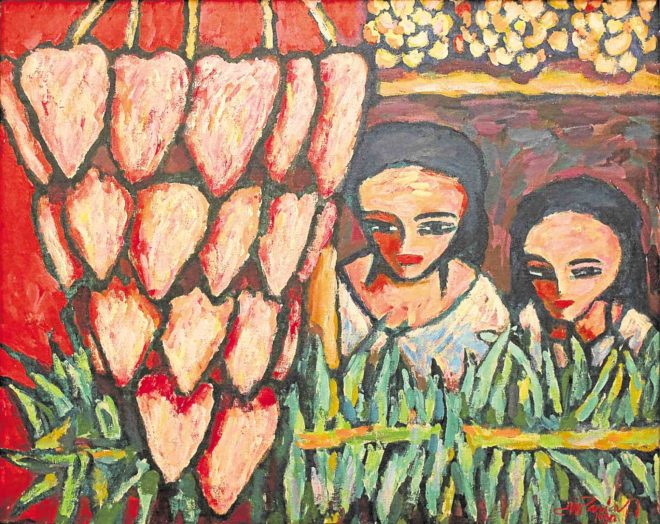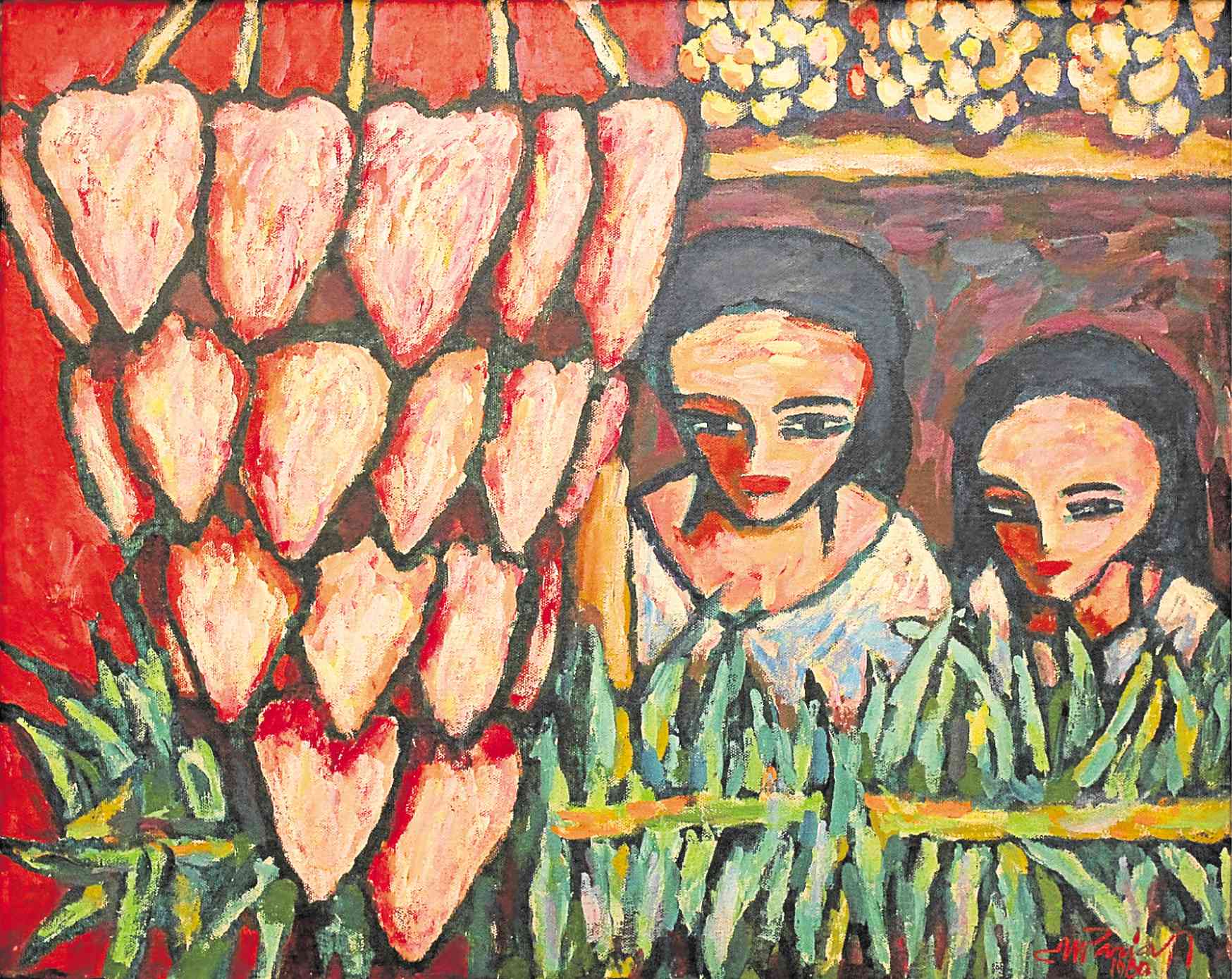
In the period of late Philippine Modernism, which roughly began with the establishment of the Cultural Center of the Philippines and its Thirteen Artists Award in the early 1970s, the artistic environment was rich in experimentation of theme, subject and medium. From this creative cauldron came forth the early abstractions of Justin Nuyda and Romulo Olazo, the sculpted figurations of Eduardo Castrillo, and the genre art of Mario Parial.
Parial (1944-2013), perhaps best-known today for his festive canvas works, was, in fact, one of the most experimental of that lauded generation of artists.
His paintings, as well as his works of print and photography, are pioneering in their depictions of folk religious imagery, rural landscape themes, and infectious joie de vivre in palette, hue and tone.
“What is striking is the fecundity of the artist’s vision, the intensity of creative fervor at full-throttle,” art critic Cid Reyes wrote. Parial’s inclusion in the second batch of the CCP Thirteen Artists Award in 1972—alongside Olazo and Nuyda—was a foretelling of his rightful place as one of Philippine Modernism’s most prodigious figures.
Not only was he an accomplished painter and a pioneering print maker, he was also an exceptional photographer. He was a fixture in art and cultural events, often clutching his beloved Leica rangefinder.
His cancer diagnosis spurred him into a productive phase of creativity until his untimely passing in 2013.
To provide a survey of Parial’s key memorable works, Galerie Joaquin at 8 Rockwell in Makati is mounting “Defining Mario Parial.” Folk religious imageries, Moriones figures, masks, jesters, and rural scenes in painting and print will be on display in one of the more informative and defining Parial exhibitions ever held.
Parial, born in Gapan, Nueva Ecija, on Aug. 13, 1944 to Fidel Garcia Parial, a kalesa coachman, and his wife Aurora, was the eighth of 14 children. The prosperous rural town would eventually serve as a foundational setting for much of his artwork.
When the family moved to La Loma, Quezon City, Parial pursued a Fine Arts degree at University of Santo Tomas, where he also took Theology classes.
The Theology classes helped Parial develop an interest in Philippine folk imagery. He studied the rituals and customs of urban and rural folk. From this came his early themes of the Nazareno, Marian processions and the Moriones.
The artist frequently used figurations as a platform for a deeper investigation of the meaning of folk motifs.
“Parial has also gone in areas exploring the decorative and emblematic elements of talismanic anting-anting and the religious icons of folk Catholicism,” art critic Leo Banesa wrote.
While a student at UST, Parial also attended the printmaking workshops of Manuel Rodriguez Sr., Father of Philippine Printmaking, at the Philippine Women’s University.
“A teacher can tell when a student has got what it takes. I can say that of Parial,” Rodriguez would later write of his student.
In 1965, Parial held his first solo exhibition which featured 35 prints, organized by the Art Association of the Philippines.
Parial reinvented the Mother and Child genre painting in his “Mayhaligue” series, which features the exceptional approach of framing the subjects with a window. Mayhaligue was the name of a street in Santa Cruz, Manila, where the Parial family lived in the ’70s.
The first painting, done in 1976 and sold to 1952 Miss Universe Armi Helena Kuusela-
Hilario, ostensibly depicts Parial’s wife, Carina, and their first-born Ochie. The house address, 1624, is displayed alongside potted foliage in what the artist would consider one of the happiest periods of his life. —CONTRIBUTED
“Defining Mario Parial” runs until July 23 at the lobby of 8 Rockwell, Rockwell Center, Makati City. Call 7239418; e-mail [email protected].









































